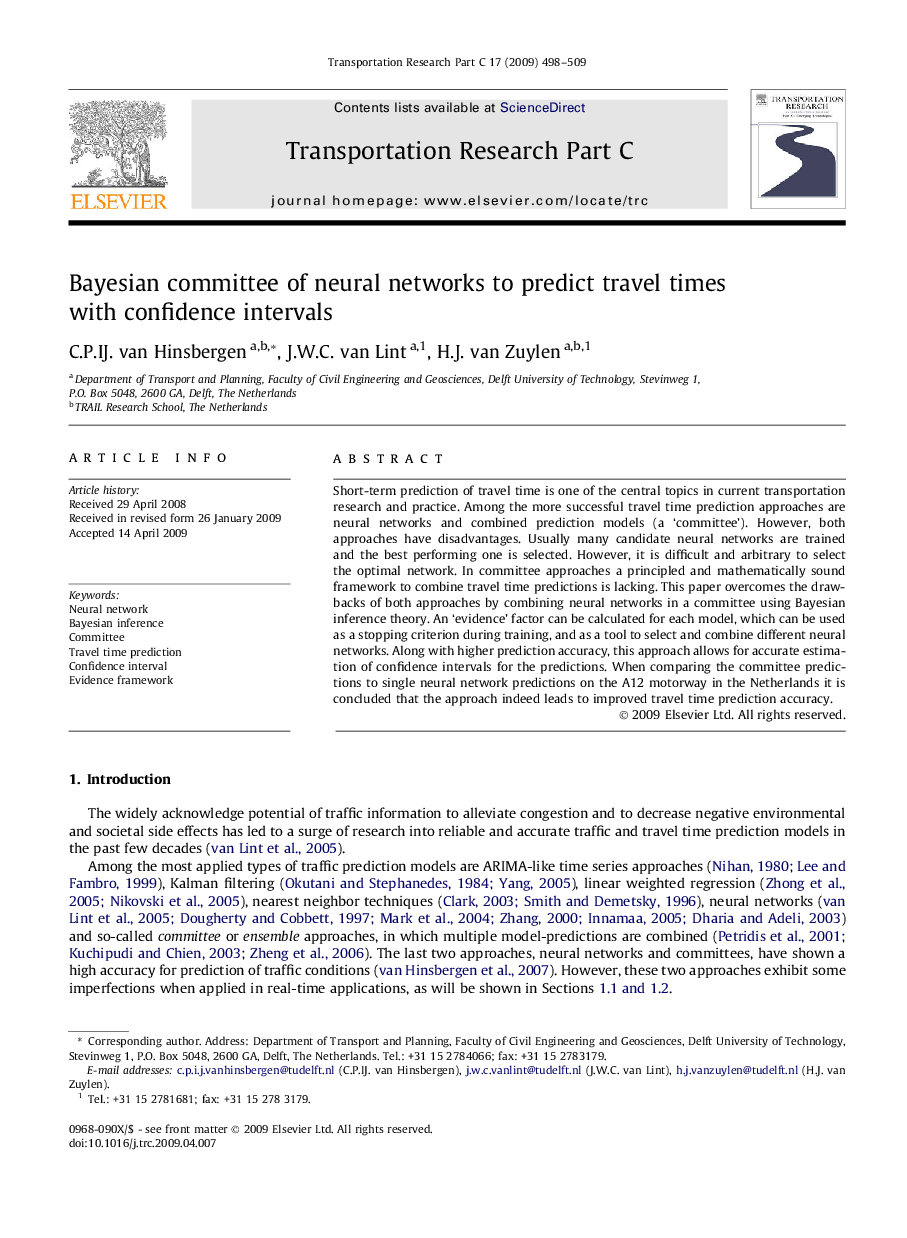| Article ID | Journal | Published Year | Pages | File Type |
|---|---|---|---|---|
| 526652 | Transportation Research Part C: Emerging Technologies | 2009 | 12 Pages |
Short-term prediction of travel time is one of the central topics in current transportation research and practice. Among the more successful travel time prediction approaches are neural networks and combined prediction models (a ‘committee’). However, both approaches have disadvantages. Usually many candidate neural networks are trained and the best performing one is selected. However, it is difficult and arbitrary to select the optimal network. In committee approaches a principled and mathematically sound framework to combine travel time predictions is lacking. This paper overcomes the drawbacks of both approaches by combining neural networks in a committee using Bayesian inference theory. An ‘evidence’ factor can be calculated for each model, which can be used as a stopping criterion during training, and as a tool to select and combine different neural networks. Along with higher prediction accuracy, this approach allows for accurate estimation of confidence intervals for the predictions. When comparing the committee predictions to single neural network predictions on the A12 motorway in the Netherlands it is concluded that the approach indeed leads to improved travel time prediction accuracy.
